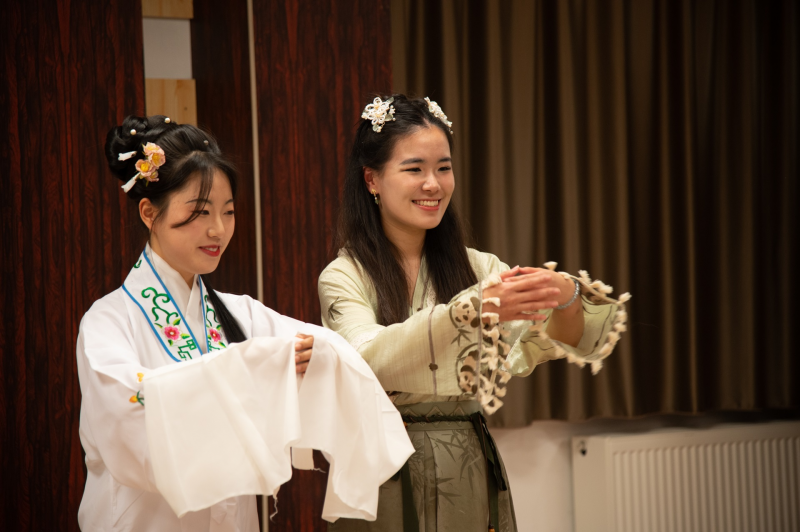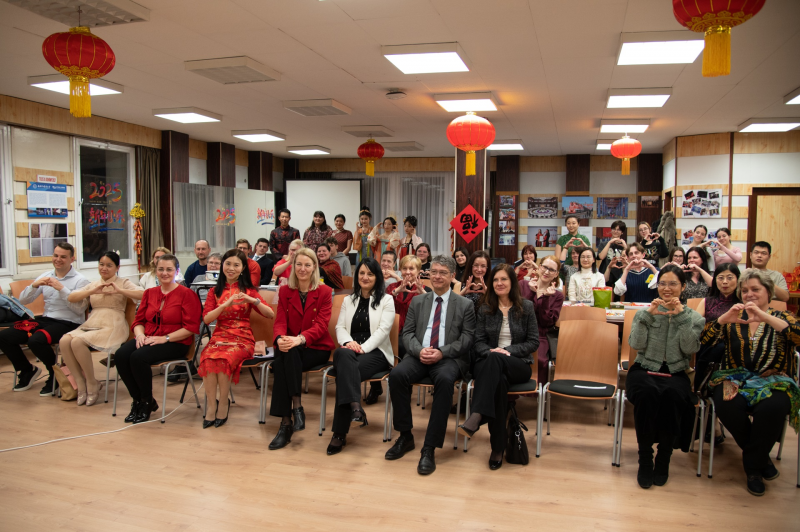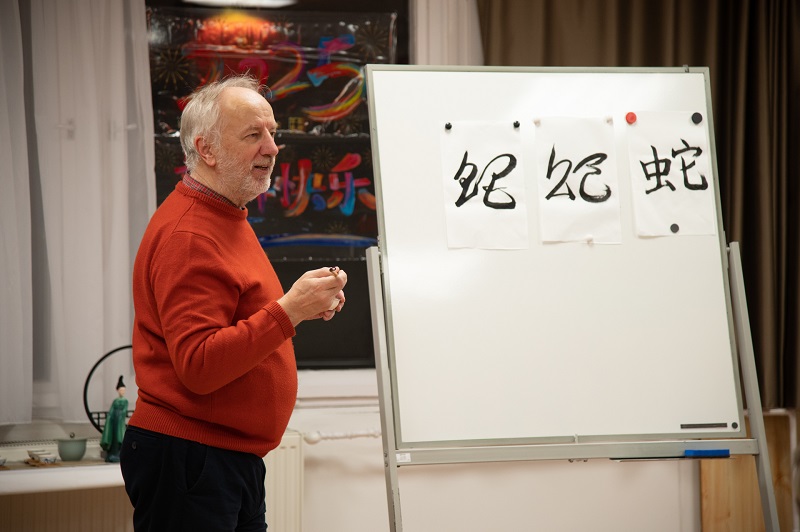
On January 28, 2025, the University of Szeged’s Confucius Institute hosted a New Year’s Gala to celebrate the transition from the Year of the Dragon to the Year of the Snake in the Chinese calendar. The gala featured performances rooted in traditions that were added to UNESCO’s Intangible Cultural Heritage (ICH) list in 2024. In fact, this event is closely tied to the traditional Spring Festival, which marks the start of the new year and is the most cherished festivity for Chinese people – a time for family reunions.
The Confucius Institute hosted a New Year’s Gala on January 28, 2025, to bring together its supporters and friends in celebration of a new beginning. The event served as a unique platform for connecting with key contributors to the institute’s continued success, including students, collaborating colleagues, distinguished long-term partners, school leaders, Hungarian mentor teachers of Chinese-language programs, administrators, and staff from affiliated schools and the University of Szeged.

In Chinese literature and popular culture, the snake is often depicted as a cunning trickster. Yet, in many regions, it retains its ancient symbolism, representing agility, transformation, prosperity, and wisdom. Often called the “little dragon,” the snake shares a mystical kinship with the heavenly serpent, though it lacks the latter’s sheer power. This connection is also reflected in the Chinese zodiac, where the snake follows the dragon – with 2024 having been the Year of the Dragon. While beliefs vary, the Year of the Snake is frequently associated with profound transformation, bringing opportunities for career advancement and financial growth. Some believe that under the Snake’s influence, people become more observant and reflective; however, such interpretations ultimately depend on individual views.




























Photo gallery by Karina Bartha
Press on the photo gallery to view the pictures taken at the event
With all the Chinese language teachers from the University of Szeged Confucius Institute in attendance, the gala featured a vibrant fusion of musical and dance performances, complemented by immersive cultural workshops. It provided students with a chance to showcase their progress and offered teachers an opportunity to celebrate their achievements over the year. One of the evening’s highlights was the mesmerizing Taiji Fan opening dance, performed by a Chinese teacher and four Hungarian high school students. Enriching the cultural experience, the institute’s staff also presented their own handcrafted ‘exotic’ decorations and artisanal creations, sharing them with the audience.

“In China, it is a cherished tradition for families to reunite on Chinese New Year’s Eve, gathering for a festive dinner and watching the Spring Festival Gala – a grand spectacle broadcast live on national television all the way to midnight. Being able to recreate a miniature version of this celebration here in Szeged, together with our local friends, just seven hours behind China, is a special way to ease loneliness and foster a sense of belonging to a much larger family. As this celebration unfolds, some of our teachers will soon be returning to China after completing their work here, while new educators have arrived to take their place. So, this is both a heartfelt farewell and a warm welcome,” said Dr. Wang Rui, Chinese director of the Confucius Institute at the University of Szeged.
The one-hour program, which opened with the Taiji Fan dance performance, also included a calligraphy segment where participants practiced writing the Chinese characters for Fu and Snake with a brush. The organizers also presented a mini-play reenacting The Legend of the White Snake, one of China’s four most famous romantic folk tales. Taiji elements and calligraphy – along with traditional art forms like Peking opera – are all recognized as part of China’s cultural heritage and have been included on UNESCO’s Intangible Cultural Heritage (ICH) list.
As the focus shifts beyond the celebrations, the Confucius Institute at the University of Szeged is now turning its attention to the spring semester of 2025. It is actively engaged in discussions about expanding its Chinese-language programs, with a particular focus on corporate training. Three negotiations are currently underway, and the programs are expected to launch in February or March.
“We will continue to host a diverse array of cultural programs at the school, university, and community levels. Looking ahead, we have a clear vision of the key events that will define the coming year. Among them is the 5th Chinese Language Education Conference in Hungary, organized in collaboration with Eötvös József High School and Primary School in Szeged. We will also participate in the annual global ‘Chinese Bridge’ Chinese Proficiency Competition – where one of our students earned the title of Hungarian champion last year. In June, we will once again host the global BRESC (Belt and Road English Speaking Contest), overseen by China Daily. Additionally, we will celebrate Panda Day and the Lotus Festival at the University of Szeged’s Botanical Garden. Throughout the semester, we will also have a series of Confucius Tea House lectures and workshops,” said Dr. Wang Rui.
Original Hungarian text by Ferenc Lévai
Photos by Karina Bartha

